Finger tendonitis, Recovering from finger pain from typing
Recent Update Note: Something that will instantly reduce inflammation (and pain) has always been the first thing that I looked for. Recently, I discovered one such formulation (in India).
FibroSet – containing acetyl-l-carnitine – addresses persistent tendinitis. Here is a research study also highlighting it’s efficacy in persistent neuromuscular pain conditions – that do not respond to standard treatments.
(Also read a more recent post, finger pain and homeopathic treatment)
A severe tennis elbow (in both arms) caused my hands and fingers to weaken considerably. Instead of fully resting the elbow, I continued with computer work (typing, mousing) – which led to a worsening of the fingers and hands. In effect, I ended up with the same thing in my fingers as in my elbow – tendonitis. It is not a pleasant thing to have – and from everything I had read and heard, it would take forever to heal. And computer work would be out of the question for the time being.
Not being able to accept any of these ultimatums, I first calmed myself down – and then decided to tackle this with the same zeal as I had my tennis elbow.
Part of my assumption was that as my elbow healed and became stronger, so would my fingers. This turned out to be not entirely accurate. While my elbow healed relatively earlier – the fingers and the hands still continued to experience pain – which worsened as soon as I resumed computer work.
Too many joints in the fingers and hands
TENS
Part of the problem was that – whereas tennis elbow involves a single joint, each finger has multiple joints. Each of those joints becomes inflamed due to overuse. In my case, whichever joint I pressed, was painful. Typing would aggravate the pain considerably. So- I had to treat not one, but many, many pain points.
Mis-Diagnoses
Most doctors actually fail to make the connection – and finger tendonitis is one of the last things they diagnose. Arthritis, nerve compression etc. are the usual suspects. So – I was sent for hand xrays, arthristis blood tests and nerve compression (conduction) studies. All negative. I tried to explain the onset (excessive typing with an injured elbow), but it took many orthopedics (and a couple of neurologists – see Appendix A) – before a family doctor of mine told me :
‘You know that thing in your elbow ? Overused tendons?’
I said ‘Yes. I know that – only too well’
He said ‘ Same thing in your hands. Give it rest. Lots of rest. Avoid typing. Take strong anti-inflammatories (Naproxen) for 10 days. Let me know how it works out.’
The anti-inflammatories actually did provide relief – though it wasn’t permanent. And one doesn’t want to repeat those strong doses too often (too many side effects)
See Appendix B below – to quickly see if you have Carpal Tunnel or Thoracic Outlet Syndrome to blame for your finger pain.
Taking matters into my own fingers
Being told by all professionals that there wasn’t anything that could be done – except wait – and watch – and wait some more – I was a bit disappointed. Since I had spent over a year and a half trying to heal a stubborn tennis plus golfer’s elbow, I had a few things I wanted to try (things that had worked well for the tennis elbow – and I hoped would work well here as well).
My top scoring remedies
Apply DMSO before sleeping
DMSO is one of the most powerful anti-inflammatory substances in my experience (I learnt about if from Dr. Weil’s website). Check out some amazon reviews and also research this product online. The ONLY downside to this gel is an itchiness that lasts for about 15-30 minutes after application. Most people get this reaction – some more strongly than others. However, the INSTANT pain relief that one experiences, in my opinion, outweighs any itchiness. You can always soothe the skin with Vitamin E oil – which is itself good for tendonitis pain. Yes – I would not apply DMSO more than TWICE a day – else your skin may not be too happy (again, depends on your sensitivity level).
For best results, apply it (all over the back of your fingers and hands) prior to bed time – and let it stay on your skin all night (of course, if it itches too much, feel free to wash it off or rub vitamin E oil to soothe it). Repeat for as many days as needed – usually within a week – even the most severe tendonitis pain starts retreating. There is NOTHING in my experience that brings down pain levels so drastically – and PERMANENTLY. For e.g. – the TENS unit also provides IMMEDIATE relief – but I am not sure how PERMANENT that relief is.
The more you rub it in (the longer you massage it), the better it works.
TENS unit
If I could award a ‘medical Oscar’ to any medical device, the TENS unit would be my choice. It’s ability to instantly provide pain relief – to ANY PART of the body, is nothing short of miraculous. I don’t claim to understand the underlying workings of subcutaneous stimulation – but whatever it is, it works! At my worst pain levels, I could still type as long as I had this device plugged in. With the TENS unit, the pain just disappears – at least while you have it on. It is a good idea to splurge on rechargeable 9V batteries and high quality pads.
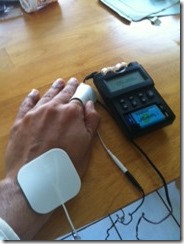
Acupressure Ring (and Ball)
Rotate this ring clockwise and counterclockwise – it hurts a little – but it also gets blood circulating to the finger. Very effective in the healing process. The ball is used to stimulate circulation in the hands – just hold it in your palms and rub it as powerfully as you can manage.
| Acupressure Ring (roll and rotate over fingers) | Acupressure Ball (rub inside palms) |
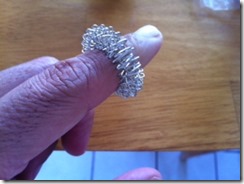 |
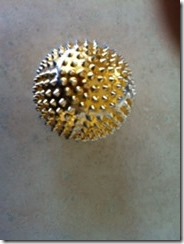 |
Vitamin E oil Rubbed over fingers
Slice open a capsule and rub the oil over the fingers and hand. This has a healing effect. This oil can also be combined with the DMSO gel above (DMSO helps in absorption of items through the skin – so the oil gets absorbed better).
MSM, Glucosamine, Chondroitin COMBO – Long Term maintenance
This combo was recommended by my General Physician for overall joint maintenance. Just two a day and you can feel ‘stronger’ joints. In my case, my finger joints not only felt stronger, but also had reduced pain. Also, I could run longer (no knee fatigue). Definitely a keeper; Even though my hands healed a few years ago, I continue to take these (at least 6 months, each year) to retain that ‘super strengthy joints’ feeling. I believe this supplement alongside my exercise regimen have kept me pain free since.
Hand and Finger Massager
I found this handy mechanical device on amazon. Very effective on the hands and wrists. You can adjust the tension – to provide as FIRM a massage as your hands need.
 Roleo Pain And Stress Reliever: Health & Personal Care Roleo Pain And Stress Reliever: Health & Personal Care
ASIN: B005EXYSJW |
Exercises for Relieving Pain
- Tight fists down turned – relieves wrists, fingers and elbows
- Carpal tunnel wrist rotation stretch – If you suspect some carpal tunnel type of wrist pain, the carpal tunnel stretch will help relieve that as well.
- This blog post has a few videos showing DIY finger joint massages – easy to follow.
- Nerve Compression Issues (See Appendix B) – I was REALLY impressed to find this YOUTUBE video – the THREE stretches in here cover ALL the three main nerves – median, radial and ulnar – that can be problematic.
Exercises for STRENGTHENING fingers
The fingers need to be strengthened alongside the pain reduction remedies listed above. The exercises mentioned below all help in returning finger strength to the weakened fingers (and palm).
A general principle about strengthening JOINTS (as opposed to MUSCLES) is that – REPS, REPS, REPS. More Reps, with lower weights are better than few reps with higher weights.
JOINT STRENGTHENING is VERY different from muscle strengthening. Muscles need to be fatigued by reaching higher and higher weights – before they break and rebuild new fibers. For JOINTS, this recipe is disastrous. What you want is smaller weights – and more reps. I learned this from a physical therapist that I worked with – and it has been a game changer in my recovery process. The finger JOINTS are no exception. It is the JOINTS that hurt – because that’s where the TENDONS are attached. The exercises below must be done with increasing REPS.
STRETCHES as opposed to WEIGHTS – In general, STRETCHING will help your tendons recover more than weights will. The stretches can be simple hand flexion or involve the use of an elastic (resistance band). In my experience, resistance band stretches are the BEST thing you can do for joint /tendon strengthening.
- Claw grip
- Rubber (ELASTIC) band stretching
- Squeeze Clay, Squeeze tennis ball
The two most important exercises are the stretching and squeezing ones. These build grip strength – both closing the grip – and opening the grip.
Equipment Change – Keyboard and Mouse and Touchscreen devices
Keyboard basics
- Use a mechanical keyboard.
- Use a keyboard without staggered keys.
Mouse Basics
- Use a LIGHT mouse
- Use a vertical mouse
Touchscreen devices
When you use your fingers to press a touch screen, all the shock is absorbed by your finger (you might as well be pushing against concrete). This , over a period of time, can cause finger tendonitis in itself (google the case of the 8 year old girl who was glued to her touchscreen phone and developed tendonitis). Fortunately, the solution is simple. Use a stylus on your touchscreen devices – let IT absorb the shock instead of your fingers.
Detailed Keyboard and Mouse Reviews
Mechanical Keyboards (Updated Oct 2015)
The most important discovery I made was regarding the TYPE of keys.
Mechanical keys are the only keys that actually provide any decent level of SHOCK ABSORPTION. With a gentle pressure from your finger tips, the key continues its depression on its own without any further pressure from your fingers. This makes it exceptionally gentle on the fingers. Once you get used to these keys, you will discover that regular keyboards (rubber keys) are just not the same. They let your fingers absorb the bulk of the shock instead of the key switch itself.
While ANY mechanical keyboard will offer superior finger protection compared to non-mechanical, there was one that stood out in my experience. The TECK keyboard listed below. However, there are SEVERAL good mechanical keyboards on the market. These are mainly popular with GAMERS – but they are suitable for regular use as well. The CORSAIR mechanical keyboard was one that I tried – and had a good experience with.
Staggered versus Non staggered keys
Any keyboard you look at will have its keys NOT LINED UP. That is, the Q is not directly above the A and the A is not directly above the Z. This design (called STAGGERED keys) is HORRIBLE on the fingers – since they have to constantly stay non-lined up – as they move from key to key. A better design would be to have all the keys along a column – directly above /below each other. This is called a NON-staggered design. Again, once you try it out, there will be no going back. I can type for hours on a non-staggered keyboard without any pain – but move me to a regular keyboard – and after a couple of hours, my fingers feel stressed out. (btw– I have tried all the Kinesis keyboards as well – and while they offer the split keyboard design, most of them DO NOT have mechanical keys).
Kinesis Keyboard (with VIP accessory kit)
While it doesn’t offer mechanical keys, the keys are extremely soft. And while it doesn’t offer a non-staggered layout, the separation of the halves (split keyboard – with 20 inch separation) is a real asset. This is especially good if you have shoulder pain while typing – or if you tend to ‘crouch’ your upper body while typing. The keys are the softest of all the keyboards I tried, which is the main reason I recommend this keyboard. I would not recommend it WITHOUT the VIP kit – the kit makes it highly customizable.
|
Totally Ergonomic TECK Keyboard
The TECK keyboard listed below combines both of the above finger friendly features – mechanical keys and lined-up (non staggered) keys. There are other keyboards that offer mechanical keys as well as NON Staggered layouts. This one has met my needs for the past year or so. Apart from their slightly (actually COMPLETELY) unresponsive customer service (in case you have to do a return or something), the product itself is solid. Again, I must emphasize that their customer service is non-existent – no telephone number on their website. An email contact form – which never gets an actual response. But I give the product points for combining the two most finger-friendly features – non-staggered layout and mechanical keys. The learning curve? Online reviews will scare you with a huge learning curve – in reality, it took me less than a week to get used to the slightly off ENTER and DELETE and SHIFT keys. Once I got the hang of these, the rest of the keys are standard (QWERTY…). Their logic behind relocating the ENTER and SHIFT keys is sound – these are the most oft used keys and deserve to be in a CENTRAL location – where the THUMB (your most powerful digit) – can access them.
Light-IO Touch Free Keyboard
This keyboard has laser activated keys. You DON’T touch the keys – they SENSE the incoming depression from your fingers – and the key gets activated (no touch involved). This is a great keyboard if you are willing to spend some time building up your typing speed. Since there is NO touch involved, it provides no pressure on your fingers. For me, initially, I felt this was the perfect solution. However, my typing speed on this was very slow. A suggestion offered by other users was to buy TWO such keyboards – one for the left and one for the right. Again, I just couldn’t type at any reasonable speed here – maybe I did not spend enough time with it.
Mouse (Oct 2013) –
The mouse that I still continue to use is the 3M vertical mouse listed below. It is lightweight – and most of all, places your wrist in a neutral position – which causes no stress even after long periods of usage. The 3M Ergonomic mouse ( get the large, the small is too small ) is the one that I use on a regular basis.
 3M Ergonomic Mouse, Optical, USB/PS2 Compatible, Large Size, Black (EM500GPL): Computers & Accessories 3M Ergonomic Mouse, Optical, USB/PS2 Compatible, Large Size, Black (EM500GPL): Computers & Accessories
ASIN: B00008KWWF |
Older Recommendations (March 2013)
This is an older keyboard recommendation – the Microsoft Natural 4000 keyboard – which is a cost-effective option. However, it DOES NOT have mechanical keys and it DOES NOT have the column (non staggered) design. However, it is gentle on the fingers and especially on the shoulders due to its split keyboard design. As for the mouse , a vertical mouse is the way to go. The 3M Ergonomic mouse ( get the large, the small is too small ) is the one that I use on a regular basis.
 Microsoft Natural Ergonomic Keyboard 4000: Electronics Microsoft Natural Ergonomic Keyboard 4000: Electronics
ASIN: B000A6PPOK |
Honorable Mentions (that helped in the healing process)
- Magnesium Oil – Just rub over injured areas. It relaxes all surrounding muscles – reducing the pull on tendons.
- Liver Detox – In Chinese medicine, all forms of tendonitis are a result of an underperforming liver. It doesn’t hurt to do a liver detox – if you have a fatty liver to begin with. Regular (as in EVERY day) exercise (cardio, running, walking, cycling) is THE BEST medicine for a fatty liver (it actually reverses the condition).
Appendix A – Neurological visits
One of the worst things to do in this condition – is to research finger pain on the internet. Since fingers tend to shake (tremor) when they are hurt, the results returned by google are all scary – without exception. I too made my way to a couple of neuros after being convinced by google that this could be serious. Fortunately, I had a REALLY good neurologist in New Delhi (his appointment list was a few months long – even with an appointment, you had to wait for a whole 8 hours before he would see you). He set me straight – and told me that the pain wasn’t neurological. It was real, no doubt – and most likely related to computer typing – and I would have to live with it! So – here was another expert telling me that I would have to live with it – there wasn’t an easy answer.
APPENDIX B – Nerve Compression? (TOS, Carpal Tunnel, Cubital Tunnel etc.)
It is possible that part of your ELBOW and FINGER pain is related to nerves being compressed somewhere between the SPINE and the hands. There are so many possibilities here – but I’ll list the top two.
- Carpal Tunnel (median nerve compression) at base of hand. There are several self tests available online to determine if you have this. Notably, you will LOSE pincer strength (thumb and index finger in a pinching formation) – among other symptoms.
- Thoracic Outlet Syndrome – Neck and Shoulder area in front of body – another common, yet overlooked cause of finger and ELBOW pain. While a full TOS diagnosis requires lots of tests, a quick way to determine this is :
- Ring and Pinkie finger weakness and pain – also possibly numbness and tingling. These two fingers are usually involved in TOS.
- Holding your arms above your head – with elbows at 90 degrees – palms facing forward – is difficult for a long period of time. Hold them this way – and try to open and close your palms quickly – for about 2 to 3 minutes. If you feel pain, fatigue in your arms and hands, you may have some level of TOS going on.
Stretches for TOS and Carpal Tunnel or ANY NERVE Compression – This YOUTUBE video – with the THREE stretches, covers ALL the three main nerves – median, radial and ulnar – that can be problematic. These stretches take less than 2 minutes. While the video is titled ‘Thoracic Outlet Syndrome Exercises’, the same exercises help with ANY nerve compression (cubital tunnel etc.) in the arm, shoulder and neck area. A POSTURE BRACE also helps in recovering from conditions such as these.
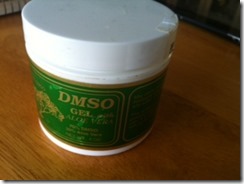
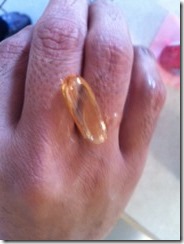
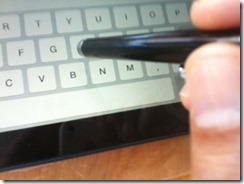
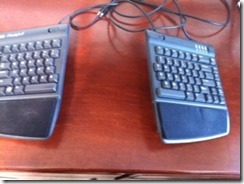
 Kinesis Freestyle2 keyboard: Computers & Accessories
Kinesis Freestyle2 keyboard: Computers & Accessories Kinesis Freestyle2 VIP3 Accessory – keyboard: Computers & Accessories
Kinesis Freestyle2 VIP3 Accessory – keyboard: Computers & Accessories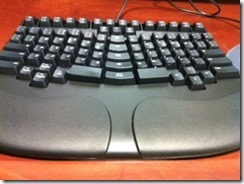
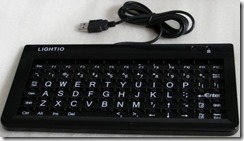
Hello Anuj, I really enjoyed reading your blog especially since I am suffering from tennis elbow since June 2015; My guess is another 3 months . I am going to buy the DMSO and Vitamin E and hope that helps. Thanks, fellow Ibdian tennis and golf aficionado
may be i have similiar issue. my fingers, wrist, fore arms elbows and upper arms hurt. while using phone laptops and when in certain sitting position. i work on computer all day. can you please tell me how long it took to recovery? and if occupational therapist or physical therapist helped you? i have been to 4 general doctors and 1 neurologist who says it might be carpal tunnel syndrome. i dont think its that. any help would appreciate. on excercise, naturl medicines etc. thanks
Occupational therapist can help. If you have carpal tunnel, definitely get that treated first. It could take up to 6 months for the pain to recede. What you do to lower inflammation is up to you – there’s many options – including icing, soaking in hot water (with salt), applying a turmeric paste…Whatever works for you. Finger stretches that are OPPOSITE to the typing motion – e.g. rubber band stretches – really helped me. Another magical device is the trigger point massage ball:
TriggerPoint Foam Massage Ball for Deep-Tissue Massage, MB1 (2.5-Inch)
Hope that helps
Thanks Anuj. This was so awesome. I’m looking in to your tips right now. I appreciate your sharing and helping others out. We needed this, okay I NEEDED this great information as I have the pain and swelling in both fore fingers!
Good luck. Just FYI – there is plenty of hope. When I had my pain (a few years back), I felt really low (since I was unable to even sit on a computer and type).
I went from severe tendonitis to fully functional – though it took me a while to get there.
You can also look into a good MSM, Glucosamine and Chondroitin Supplement. While it takes a few weeks to kick-in, the effect on joints (all joints) is highly beneficial.
Once the pain starts decreasing, I would recommend a regular workout regimen – even with light weights – if possible. That is what kept me from relapsing during my recovery.
Awesome article! Thanks for summarizing everything so well. I have MILD pain in my fingers from typing too much and am trying to be proactive and prevent things from worsening 🙁
Shalini: Yes, ‘mild’ is when you should start addressing it.
In my case, I ignored the milder symptoms.
The good news is that complete recovery is possible.
For long term prevention, I would switch (for good) to the most ergonomic keyboard and mouse you can find.
Ok, will do. Thanks again for a very informative article.
Hi – Thank you so much for posting all of this valuable information. One thing I want to mention is acupuncture. Acupuncture healed my carpal tunnel. I only had to go to 3 sessions and my carpal tunnel was cured. The practioner placed several needles in my hands/wrist area. He then twisted the needles. It was a bit uncomfortable, but nothing compared to the constant carpal tunnel pain. He said the more I could handle him twisting the needles before asking him to stop, the quicker my carpal tunnel would be healed(It’s not as painful as it sounds). While he was twisting the needles in my wrists, I could feel nerve pain shooting up to my fingertips, but after 3 sessions I was healed and I haven’t had to go back for carpal tunnel. Of course, now my fingertips are starting to ache from typing all day, so now I have that to deal with. I haven’t tried acupuncture for my fingertips yet. I think its more for nerve damage related to carpal tunnel, but may try it just to see. Anyways, thanks again for all the helpful information.
Hello Anuj – my left index finger has developed tendonitis and your article is very useful in determining the course of remedial actions.
Funnily enough, I have tendonitis in right elbow from playing squash. Do you have another blog / article on remedial measures for that?
Thanks
GM
I actually had tennis elbow in both elbows – which is what worsened the finger tendonitis. The main culprit (as per my doc) was that I continued to operate a computer keyboard even while I had severe tennis elbow – and that is what resulted in the finger pain.
Here is a summary of the various things I tried to heal my tennis elbow.
https://www.anujvarma.com/recovering-from-a-baaaaaaad-tennis-elbow/
Just curious how long it took for the above remedies to work? Have you suffered any relapse?
My finger tendonitis was not an isolated incident – it happened in conjunction with a severe tennis elbow (which I got in BOTH elbows).
As a result of my ignoring my tennis elbow and continuing to work on my computer (not a smart thing to do), the fingers bore the brunt of the typing impact – and developed tendonitis as well.
The fingers started regaining their strength after :
a) My tennis elbow started healing – which took well over a year. This post captures almost everything that I tried to recover from the severe tennis elbow condition
b) After I quit using regular keyboards and regular mice (I switched to the most ergonomic devices I could find).
No – I never suffered a relapse. This, I believe, was in large part due to an upper body workout regimen, which I continue to maintain to this day (almost 4 years later). Once my elbows were strong enough to lift small weights – I started strength training.
The results were astounding ! Within 3 months, my elbows felt way stronger, my fingers were recovering and I was generally feeling close to normal. I also never went back to using regular keyboards – although there isn’t any pain if I do go back to those.
Within 6 months of the strength training, I was fully recovered – and in some ways, stronger than before.
Hope that helps.
Anuj
I had pain in my right pinky for about 2 months. I found this article and started treating it myself with these methods. I was also experiencing neck pain and headaches, so I went to a chiropractor as well. When I told her about my finger pain, she did a thorough exam. She concluding that while typing was definitely a contributing factor, but it was a side effect of the neck pain.
She did some arm, wrist, and hand adjustments, in addition to my spinal adjustments. I used some Penetrex nightly (contains DMSO), used a brace while sleeping, tried to not type as much as I could, iced my hand and neck several times, and did some of the stretches/exercises you recommended. After a week, it’s almost entirely gone.
One thing to keep in mind is that the tendons in your fingers are connected up to your elbow, so don’t neglect treating your whole forearm as well. It might only hurt in your finger, but treating your arm is helpful too. My chiropractor pointed out that my whole forearm was swollen and the muscles were tight.
Thank you for all your work!!
Good suggestions, thanks for sharing. YEs – elbow tendinitis is a common source of a lot of finger pain issues.
https://www.anujvarma.com/recovering-from-a-baaaaaaad-tennis-elbow/
Great info… I’m still in recovery phase, neck and arm stretches, Chiropractor, physio, nerve test etc.
My past job involved lots of typing. Physio says left shoulder/neck tightness
After about 6 months – my wrist pain has stopped but I still get burning sensation in my fingers soon as I type 1 sentence…. I still can’t work out why.? Computers scare me now as I dread it all coming back.
I feel your pain. Have you tried some super ergonomic keyboards/mice?
Try coupling those with a TENS unit.
I was able to resume computer work with the ergonomic keyboard (TECK) and also
with a TENS unit attached.
Finger exercises, the rubber band stretches , are a good way to build up finger strength.
The pain does go away, and goes away completely; but you might have to avoid regular keyboards and mice.
Transition to a non-staggered keyboard and a vertical mouse.
Good luck.
Anuj, your post made my day. I am starting new year with severe left forefinger and middle finger pain. I just got diagnosed with tennis elbow for right arm and have stretching pinger pains.. I was terrified left arm may get it too thanks to the finger pain, maybe I have been stressing left arm more. I will need to make serious changes to battle this recovery but post gives me hope its not RA.. thanks a ton!!
After longer than a year of pain in the wrist, i taped the litte finger and the ring finger together for a month and that fixed my problem.
Good suggestion Esther. Taping can be an effective remedy. Thanks for sharing
Hi Anuj excellent article thanks for sharing. I find typing scrolling clicking on my laptop/keyboards causes burning in my finger tips with pain later in neck and elbow but I find it’s not quite so bad when I use android but I think that’s because I don’t have to use the mouse or tap on the pad or any clicking motions I just wondered if you had any ideas I don’t really know what to do about this and it’s difficult because I like to type and write so glad that you managed to find a solution for yourself brilliant and you’re so good to share it with us all thank you Delfino
Hello Delfino: Hard to say where the exact issue is. However, in my case all regular keyboards (including laptop keyboards) caused a problem, due to their ‘staggered’ keys. The non-staggered keyboards were what worked for me (see the TECK keyboard recommendation, buy any non staggered will do). Regarding the mouse, try the vertical mouse – there are several options here (I use one by 3M). These have worked well for me for several years now.
Also, if your elbow has issues (tennis elbow, golfer’s elbow), that can manifest as finger weakness and finger pain. One of the things to keep your finger joints in shape is the MSM, Glucosamine, Chondroitin combo supplement (but check with your doctor before you start on it).
Best of luck!
Hi Anuj excellent article thanks for sharing. I find typing scrolling clicking on my laptop/keyboards causes burning in my finger tips with pain later in neck and elbow but I find it’s not quite so bad when I use android but I think that’s because I don’t have to use the mouse or tap on the pad or any clicking motions I just wondered if you had any ideas I don’t really know what to do about this and it’s difficult because I like to type and write so glad that you managed to find a solution for yourself brilliant and you’re so good to share it with us all thank you Delfino many thanks I will try these suggestions all the best ☺
yes major pain in fingers, palm, wrist, fore arms, elbows some pain in upper arms and occasionally shoulder.if i press my elbows on the side i can feel sharp pain to my fingers.. burning tingling etc etc
did cervical MRI that was ok
Nerve studies EMG was ok
blood reports were ok except Vitamin D low in 20s
i will start MSM, Glucosamine, Chondroitin supplement and DMSO. also, tried Penetrex, however, that only helped for few days then had no impact on pain reduction
using wrist splint not helping much
pain into 4 months.. how long did your pain last? how long did it take to recover?
i am planning on trying occupational therapist.
i am heavy computer and phone user since long time..
Sorry to hear about your issues. My pain took over 2 years to disappear completely. A lot of it was my own fault for continuing using the computer when I hadn’t recovered fully yet.
The DMSO helped. The TENS unit also helped a lot.
I also moved to touch screen and used a stylus instead of typing, for a few months.
Good luck. The MSM, Glucosamine, Chon will take a few weeks to work – but is also very effective in healing the joints.
thanks a lot Anuj for this post. I have undergone a similar series of misdiagnosis by orthopedics and pain medicine specialists. I have tried looking for DMSO online/offline pharmacies. I can access it earliest in 2 weeks as it is getting imported from USA. Can you suggest any offline pharmacy in India that might have this gel available?
How are you today? I’ve been going through the same thing as you with the same clean results from the doctor were everything seems fine (but isn’t).
Hi Anuj,
I’ve been suffering from a tennis elbow injury in both arms which after a while turned into tendinitis in all of my fingers (almost identical to what happened to you).
My elbows both feel 98% healed but my fingers still ache as soon as I type (I know use a stylus as you recommend, and it really helps). I stopped typing almost 7 months ago and I’m still not healed. How long did it take to heal in your case? I know tendinitis can be a real slow burner and I’m really just looking for some hope to cling onto since nobody seems to know anything (even my doctors).
All the best
Nick
Nick: sorry to hear about your trials. The fingers, in my case, took a while longer even after my elbow had completely healed. Finger tendinitis is a little (not that much) harder to treat.
Some specific things I would recommend:
1. Ergonomic keyboards and mice – so you don’t aggravate your fingers
2. Kinesio Tape (I used something called rock tape, but any kinesio tape should work) around your fingers. Best to apply these overnight and remove them during the day. And repeat for as many nights as needed. Kinesio tape is great at healing tendinitis!
3. The DMSO Gel that is recommended in my post
4. If you have no option but to continue keyboard work, try keeping the TENS unit on, while you work. I don’t claim to understand how this device reduces the pain, but even on my worst pain days, I could continue typing with the unit on.
5. Lastly, I would recommend working on your GRIP strength. There are several gadgets / elastic bands to help, but a simple way is to simply HANG from a bar. Those pull-up bars or anything that you can hang from – keep hanging for as long as your hands will allow. This will strengthen your grip and your fingers.
IF you have a finger that is more bothersome than the rest (like my thumb was), insist on getting a cortisone shot in the thumb joint. The shot hurts for a couple of days, but definitely treats the inflammation.
I can’t give you a precise ‘duration’ – I would say my finger pain persisted for 6 months to a year after my elbows had healed!
I appreciate you taking the time to read and respond to me. I hope you are doing well.